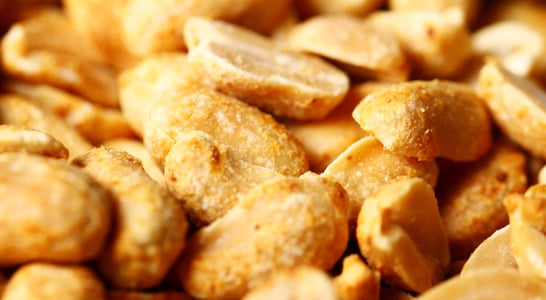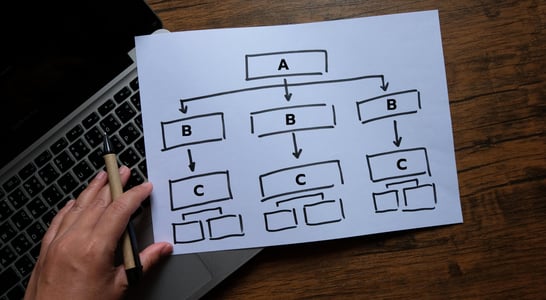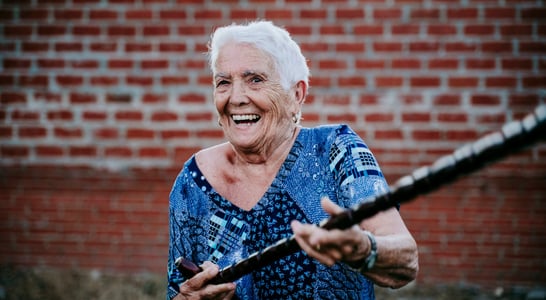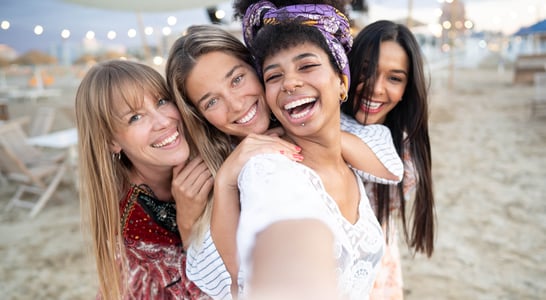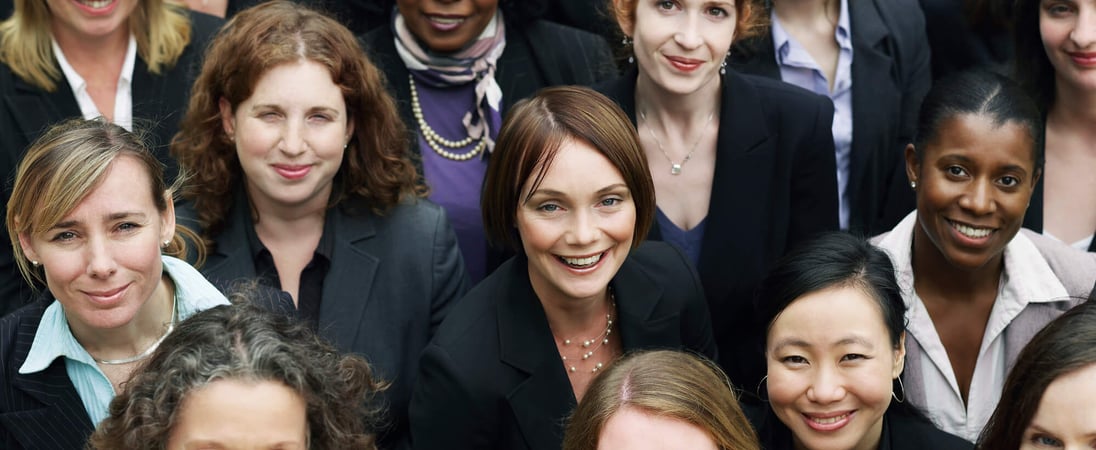
International Women’s Day
Commemorating achievements in the ongoing struggle for gender equality, acknowledging progress while recognizing the road ahead.
Mother, sisters, wives, girlfriends, and fiancees…what would we ever do without them?
Nobody can honestly say we don’t owe an enormous amount to the women in our lives, from the mothers who made us chicken soup when we were sick as children, to the sisters who helped us decide what to wear on our first date, to the wives who somehow manage to juggle both a career and a family, never missing a beat.
International Women’s Day is all about celebrating these incredible people and showing them how much we love, respect and value them.
This day is perhaps especially important in parts of the world where women are still forced to deal with shocking inequality on a daily basis and is meant to raise awareness of the challenges and struggles faced by these women.
Women’s Day celebrates women’s history, highlighting key events, milestones, and achievements, and aims to further promote and raise awareness of women’s rights and to achieve equal opportunity status in all walks of life.
How to Celebrate International Women’s Day
There are many ways that you can go about celebrating this holiday, but all of them have a similar goal: to raise awareness about the struggles of women the world over and honor their achievements.
Honor Women’s Achievements
Of course, not all achievements are huge, worldwide game-changers like women finally obtaining the right to vote—there are all sorts of other, smaller feats that women you know manage on an everyday basis that you may not pay too much attention to until you try calming 2 crying toddlers, making dinner and explaining the particulars of a newly-acquired client to your boss over the phone at the same time.
This may sound ridiculously hard to pull off, but this is something thousands of women pull off every day, something that should be deeply appreciated and something that nobody should take for granted.
Grand gestures aren’t necessarily required to show appreciation, either—sometimes a simple “thank you, I have no idea how you do it” is enough to lift an overworked woman’s spirits!
Focus On Women’s Rights
If you’d like to do something more, though, there is a virtually endless amount of things you can do to help improve women’s lives the world. Attend one of the 1000+ events organized globally where you can learn about what women’s lives are like in different countries and make a donation to the event you attend.
Reading books is also a great way of broadening your horizons, and biographies of women like fearless Somalian women’s rights activist Ayaan Hirsi Ali will definitely open your eyes and inspire you to see women’s lives and problems completely differently.
It’s no secret that women’s rights have evolved greatly. However, things could still be a lot better! People such as Malala Yousafzai, a young activist for female education in Pakistan. Her story, I am Malala, describes her fight for education as a woman in Pakistan, and the dramatic consequences of her activism.
Targeted by a Taliban’s assassination, Malala was shot in 2012. She was transported to different hospitals before being rushed to the UK, where she was treated and survived her injuries.
Her autobiography is an eye-opening shockwave that will make you aware of the struggles that many women continue to face. Nowadays, Malala is a student at the world famous University of Oxford in the UK!
Broadening your horizons on Women’s Day to understand the differences between countries and how women are treated in the world can offer a new appreciation for women.
Let Malala’s story inspire you to attend events or support more initiatives to help women. Why not keep your eyes open for books like Malala’s autobiography that share the experience of women in different cultures?
Support a Woman on International Women’s Day
Have you ever stopped to consider what it means to be a woman? Aside from the biological definition, there is a lot that goes into defining, feeling, experiencing and celebrating womanhood on Women’s Day.
No, it doesn’t have to be a philosophical debate about what makes a woman who she is! But in a day and age where gender issues and gender roles are being questioned, it’s only fair to broaden your perception of what a woman can be and do.
Therefore, Women’s Day is a day to be embraced with an open mind. Question your assumptions about what people can and can’t do based on gender. Why not support a female friend to follow her dreams?
Spend Time with Unique Women
What makes her a woman? Women, such as Anne Lister, have chosen to define their womanhood on their own terms.
During the 19th century in England, Anne Lister, also nicknamed Gentleman Jack, took part in activities that were otherwise reserved to men and also ran typically men’s businesses.
She also chose to marry another woman, and lived with her, despite not receiving any legal recognition. Gentleman Jack cultivated her free spirit without compromising, which her autobiography, Gentleman Jack, reveals.
Another autobiography that enhances the definition of being a woman is Trans, a Memoir, by Juliet Jacques.
Spend A Day In Her Shoes On International Women’s Day
Challenges exist in different shapes. It’s something Nicole Byers, the bubbly “Nailed It” presenter on Netflix knows well. Her podcast, Why Won’t You Date Me, describes with humor her quest for love and the modern expectations that society has for women.
The sweet dreams of childhood are nothing like the harsh reality, like the podcast Stuff Mom Never Told You explains. Spend the day listening to the stories of everyday women, who could be your sister, your mother, or your wife.
International Women’s Day FAQs
Why do people in Italy celebrate Women’s Day with yellow mimosa flowers?
Yellow mimosa flowers symbolize strength and sensitivity. In post-World War II Italy, activists began giving these blooms to women on March 8 as a sign of appreciation and solidarity.
The tradition grew, and now mimosa flowers are shared and displayed widely on Women’s Day.
This unique Italian custom honors women’s contributions and resilience, creating a bright and fragrant celebration of women’s rights.
Many Italian cities also host parades and special events featuring the iconic flower.
Did any famous women’s rights events happen on March 8?
Yes, New York City held the first-ever Women’s Day rally on March 8, 1908.
This protest called for better labor conditions, shorter working hours, and voting rights. It inspired socialist groups to advocate for an official day honoring women’s contributions.
March 8 later became the date for International Women’s Day, linking the fight for women’s rights with historic labor movements.
What unusual ways do people celebrate Women’s Day in Russia?
In Russia, Women’s Day is akin to Mother’s Day, with people giving flowers, chocolates, and gifts to women, whether relatives, friends, or coworkers.
Public displays of appreciation, such as poetry readings or cultural performances, are common.
Many workplaces hold parties to honor their female employees, and some schools teach special lessons on the history of Women’s Day. It’s a public holiday, so everyone joins in on the festivities.
Why is Women’s Day a holiday in some countries but not others?
Countries with historical ties to socialist movements, like Russia and several in Eastern Europe, officially celebrate Women’s Day.
Socialist activists promoted the day in the early 1900s, seeing it as a chance to push for workers’ rights and equality.
As these ideas spread, countries that embraced them often made Women’s Day a public holiday. In contrast, other regions didn’t have the same political associations, so the day remained informal.
What are some myths or misconceptions about Women’s Day?
One common misconception is that Women’s Day is the same as Mother’s Day.
While they both honor women, Women’s Day is rooted in social justice and gender equality. Another myth is that it’s only celebrated in socialist or former socialist countries.
However, it’s observed worldwide, with unique traditions everywhere from Germany to Argentina, each emphasizing women’s achievements and rights.
How did Women’s Day become popular in Africa?
Women’s Day became significant in Africa after the 1960s independence movements.
African leaders tied gender equality to national development and liberation from colonial rule.
Many countries, like South Africa and Uganda, began celebrating Women’s Day as part of broader efforts for social justice. It’s now an opportunity to spotlight issues like education and healthcare for African women.
Why is Women’s Day recognized differently around the world?
Cultural, historical, and political influences shape how each country observes Women’s Day.
In countries with strong feminist movements, it often involves rallies and awareness campaigns. Others focus on honoring women’s roles within the family, blending celebrations with local customs.
Some nations emphasize women’s economic contributions, holding business events or professional workshops. This variety highlights the universal and local aspects of women’s achievements and rights.
How did the color purple become associated with Women’s Day?
Purple symbolizes justice and dignity, two values central to Women’s Day.
Early suffragists in the UK chose purple alongside white and green for their movement.
The color later became linked to International Women’s Day through various feminist campaigns, creating a visual symbol of the movement for equality and rights.
Why does China celebrate Women’s Day as a half-day holiday?
In China, many workplaces allow women to take the afternoon off on March 8.
This tradition began in the early Communist era as a nod to women’s contributions to society.
The half-day break lets women enjoy special events, attend speeches, or simply relax, showing appreciation while maintaining productivity.
Are there any humorous Women’s Day traditions?
In Latvia, some people jokingly call Women’s Day the “Day of Roses” because so many women receive roses that it becomes almost obligatory.
Men try to outdo each other by finding the largest or most unique bouquets. The lighthearted competition has added a playful side to Women’s Day, blending respect with a bit of fun.
History of International Women’s Day
It may come as a rather sad surprise that International Women’s Day was first celebrated on February 28th, 1909 in New York.
Two years later, German socialist Luise Zietz proposed that the holiday become an annually observed one that would celebrate various women’s issues, such as suffrage, so as to promote equal rights for women.
The first few International Women’s Days were celebrated in a quite different fashion than they are nowadays, with hundreds of demonstrations taking place in Europe. During these demonstrations, women demanded they finally be given both the right to vote and to hold public office.
Employment sex discrimination was also an important issue. In 1917, the International Women’s Day demonstrations in Saint Petersburg, Russia, helped initiate the February Revolution, when women marched through the city demanding an end to World War I.
This shocked even Leon Trotsky, who, much like other Russian leaders of the day, did not expect the Women’s Day protests to cause that much of a stir. Until 1977, Women’s Day was celebrated mainly in socialist countries.
It was only after the United Nations General Assembly’s decision to proclaim March 8th International Women’s Day that the holiday gained worldwide popularity.
International Women’s Day Timeline
1848
Seneca Falls Convention
The first convention held in the United States in support of Women’s Rights, this New York meeting, held in July, signaled the beginning of the Women’s Suffrage Movement.[1]
February 28, 1909
First Women’s Day in the United States
National Women’s Day begins in the United States, prompted by a growing movement toward women’s rights. It’s organized by the Socialist Party of America and celebrated on a Sunday so working women can participate.[2]
1910
International Conference of Working Women in Copenhagen
The idea for an international day acknowledging women is brought forth by Clara Zetkin, a German political leader. This suggestion is approved by more than 100 women from 17 different countries.[3]
1911
First International Women’s Day Observed
More than 1 million women and men throughout Austria, Switzerland, Germany and Denmark, attend various rallies.[4]
1913
Russian Women Celebrate
Just prior to the outbreak of World War I, Russians celebrate International Women’s Day. It is agreed to celebrate annually on March 8 (by the Gregorian Calendar).[5]
1917
Russian Women’s Day Leads to Women’s Right to Vote
Feminist demonstrations in Russia are part of a chain of events that lead to the abdication of the Czar and the Russian Revolution, ultimately resulting in the right to vote for women.[6]
1918
Some Women in England Gain Right to Vote
Women in England over the age of 30 with property qualifications receive the right to vote (men qualify beginning at ages 19-21).[7]
1920
American Women Earn Right to Vote
After many attempts, the 19th Amendment to the US Constitution is finally passed.[8]
1945
United Nations Recognizes Equality
The Charger of the UN becomes the first international agreement to state equality between women and men.[10]
1975
United Nations First Acknowledges International Women’s Day
IWD is first celebrated by the UN.[11]
1977
UN General Assembly Adopts Women’s Day Resolution
The UN calls Member States to observe a “United Nations Day for Women’s Rights and International Peace” on any day of their choosing throughout the year.[12]
2001
Women’s Day Goes Online
In need of a reboot after having lost momentum over the last decades of the 20th century, the International Women’s Day Movement launches online. The website helps with women’s campaigns and leads out in raising money for charities that impact equality for women. [13]
See what else is happening…
There’s always more going on every month at Days Of The Year. Here are our favorites this month!
Also on ...
View all holidaysNational Peanut Cluster Day
Candy aisle treasures, with the perfect blend of nutty and sweet, a delightful snack for those craving a bit of delight.
We think you may also like...
Valentine’s Day
A day filled with love, romance and sweet gestures — the perfect opportunity to show affection towards those special people in your life.
Spunky Old Broads Day
Age is just a number when it comes to these lively ladies! They've lived through it all and aren't afraid to speak their minds.
Galentine’s Day
Gather for brunch, exchange gifts, and show appreciation for the love and laughter your gal pals bring to your life.
International Day for the Elimination of Violence Against Women
Promoting respect and dignity for women, this vital movement strives to create a world where every woman feels safe, valued, and empowered.

